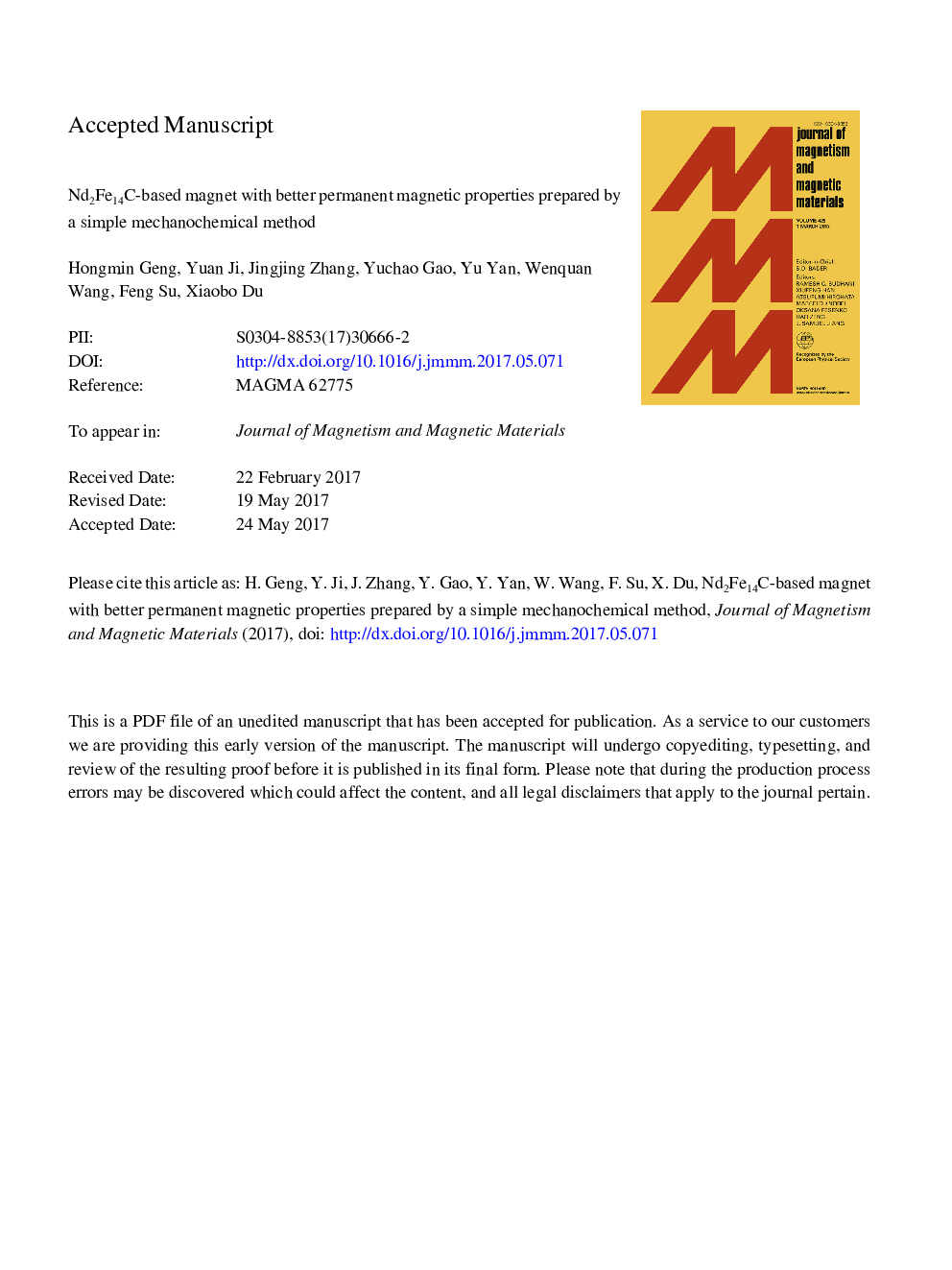| Article ID | Journal | Published Year | Pages | File Type |
|---|---|---|---|---|
| 5490441 | Journal of Magnetism and Magnetic Materials | 2017 | 18 Pages |
Abstract
Nd2Fe14C-based magnet is prepared by a mechanochemical method, namely high-energy ball-milling Nd2Fe11Bx (x = 0-0.15) alloy in heptane (C7H16), followed by annealing to 850 °C in vacuum. Under the action of high-energy ball-milling, Nd2Fe11Bx react with heptane to form NdH2+δ, Fe-(CB), C, etc. H2 is released and Nd2Fe17, Nd2Fe17Cx (x = 0-3), Nd2Fe14C, Nd carbides and α-Fe are formed in the subsequent annealing. C amount depends on ball-milling time t. Long time ball milling or high C content suppresses the formation of 2:17 phase and favors the formation of 2:14:1 phase in the final products. Excessive ball-milling results in the quick increase of α-Fe. The maximum of magnetically hard Nd2Fe14C is obtained at t = 4 h. For Nd2Fe11 samples, there exists considerable quantity of Nd carbides and α-Fe phase appears earlier and increases rapidly with extending the ball-milling time t. The addition of B element shortens the ball-milling time of the formation of maximum Nd2Fe14C and prominently suppresses the formation of Nd carbide and α-Fe. The optimum magnetic properties, coercivity iHc of 1193.7 kA/m, remanence Mr of 580.9 kA/m, maximum magnetic energy product (BH)max of 91.7 kJ/m3 is approaching to its theoretic value of 99.2 kJ/m3 for isotropic Nd2Fe14C magnet, are obtained in Nd2Fe11B0.06 alloy ball milled for 3.5 h.
Related Topics
Physical Sciences and Engineering
Physics and Astronomy
Condensed Matter Physics
Authors
Hongmin Geng, Yuan Ji, Jingjing Zhang, Yuchao Gao, Yu Yan, Wenquan Wang, Feng Su, Xiaobo Du,
